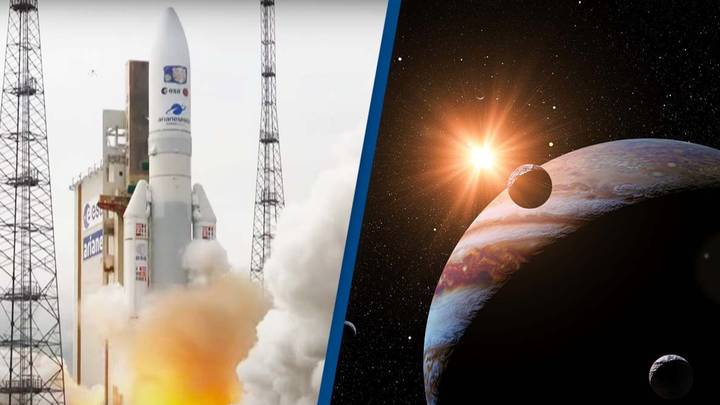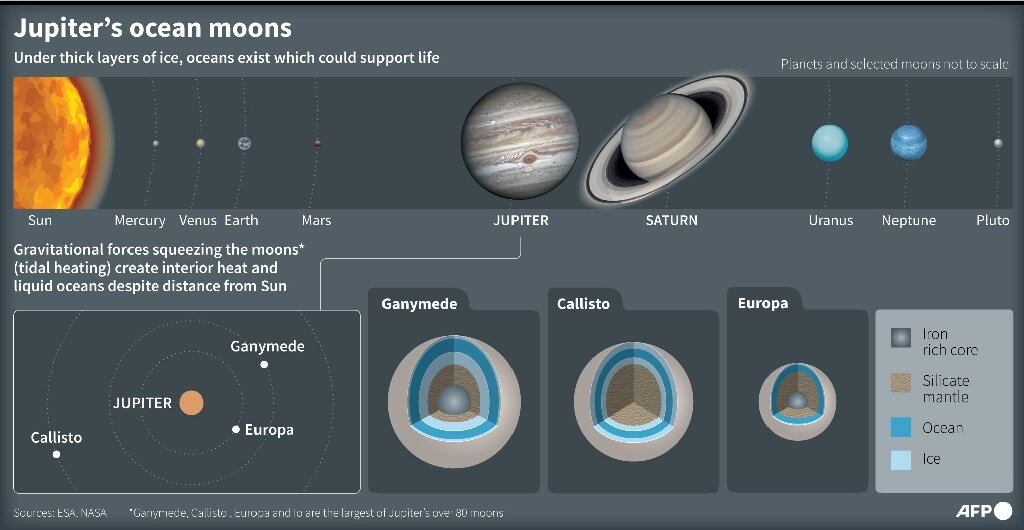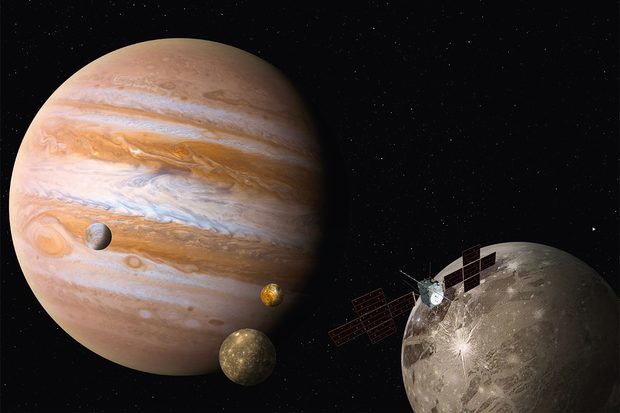The European Space Agency (ESA) launched the Jupiter Icy Moons Explorer mission (Juice) on Friday, 14 April, at 8:14 a.m. ET using an Ariane 5 rocket from Europe’s spaceport in Kourou, French Guiana. Juice aims to explore Jupiter and three of its largest moons. Following a successful separation from the Ariane 5 rocket, the ESA received a signal from Juice about an hour after launch, confirming that communication between the vehicle and Earth-based mission control is established.
Buy Prime Test Series for all Banking, SSC, Insurance & other exams

The Ultimate Destination of the European Space Agency’s Juice mission:
Juice will spend the next 17 days deploying its solar arrays, antennas, and other instruments before conducting three months of instrument testing and preparation. The spacecraft’s ultimate destination is Jupiter, and it will take eight years for Juice to reach the planet, which is the largest in our solar system. During its long journey, the spacecraft will use gravitational slingshots by flying past Earth, our moon, and Venus to help propel it forward.
Significance of this Missions:

Three of Jupiter’s largest moons, Ganymede, Callisto, and Europa, are believed to have subsurface oceans that could potentially support life. In 2024, NASA will launch the Europa Clipper mission, which will reach Jupiter in April 2030 and conduct almost 50 flybys of Europa, eventually coming as close as 16 miles (25 kilometers) to the moon’s surface.
At the same time, the Jupiter Icy Moons Explorer mission (Juice) launched by the European Space Agency will explore Ganymede, Callisto, and Europa, further contributing to our understanding of these icy worlds and their potential for life. Together, these two missions have the potential to unravel some of the most significant mysteries surrounding Jupiter and its moons.
You may also read this:
NASA’s High-Resolution Air Quality Control Instrument Launches




 Weekly One Liners 15th to 21st of Decemb...
Weekly One Liners 15th to 21st of Decemb...
 World Basketball Day 2025 Celebrates Bas...
World Basketball Day 2025 Celebrates Bas...
 UN Celebrates Second World Meditation Da...
UN Celebrates Second World Meditation Da...







